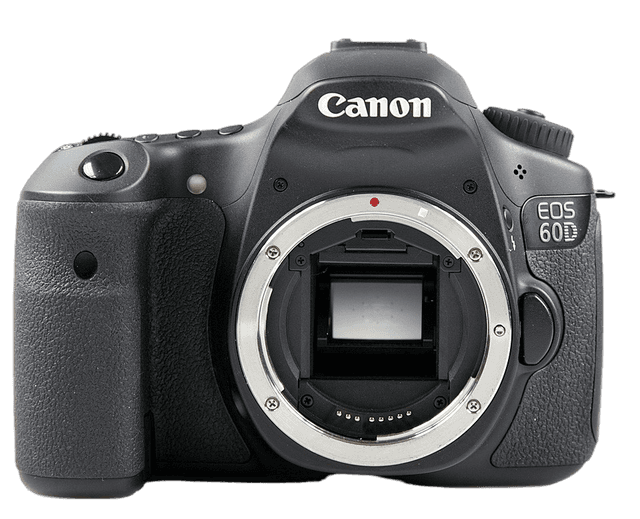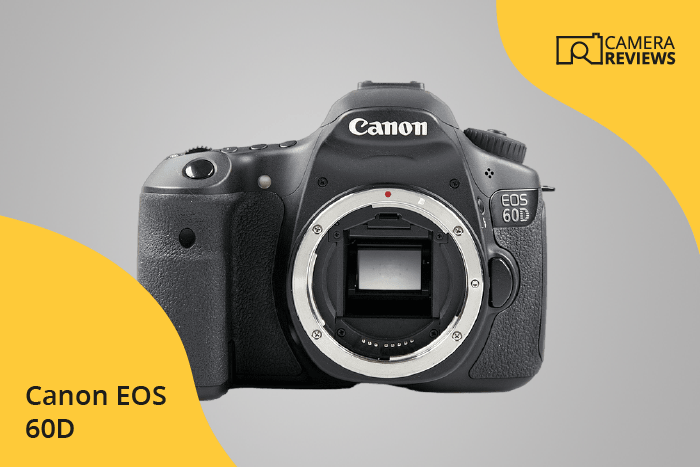Canon EOS 60D Specs and Scores

The Canon EOS 60D scores a 47/100 in our evaluation. Announced on August 26, 2010, this DSLR camera was launched at a price of $1199. With dimensions of 145 x 106 x 79mm, the camera weighs 755g or 1.66lbs. Considering its age and current market competition, the EOS 60D has decent specifications but struggles to keep up with newer models. Despite this, the camera still has value for those looking for a budget-friendly DSLR option.
Canon EOS 60D Overview and Optics
The optics of the Canon EOS 60D receive a score of 43/100. This camera features 18 megapixels, a shooting speed of 5.3 frames per second, and a CMOS sensor. It is equipped with a Digic 4 processor, a DXOMARK score of 66 for the sensor, and an APS-C sensor size. The lens mount is Canon EF-S, but the camera lacks image stabilization. The aspect ratio is 3:2.
When comparing the Canon EOS 60D’s optics to current market offerings, it falls short in some areas. The absence of image stabilization can lead to less sharp images, especially in low-light conditions or when using longer focal lengths. Additionally, the 18-megapixel resolution is lower than many contemporary cameras, which may impact the level of detail captured in images.
Despite these limitations, the Canon EOS 60D remains a viable option for those seeking a reliable camera with decent optics. The combination of a CMOS sensor, Digic 4 processor, and Canon EF-S lens mount provide ample opportunities for photographers to capture quality images in a variety of situations.
Canon EOS 60D Video Performance
The Canon EOS 60D receives a video score of 43 out of 100. This camera offers Full HD video recording with a maximum resolution of 1920 x 1080 pixels. The highest frame rate available for video recording is 30 frames per second. However, it lacks built-in time-lapse functionality.
In comparison to other cameras in today’s market, the EOS 60D’s video capabilities may not stand out, as many cameras now offer 4K resolution and higher frame rates. The absence of time-lapse functionality further limits its appeal for videographers looking for advanced features.
Considering the video capabilities, the Canon EOS 60D may not be the top choice for users prioritizing video recording. However, it still delivers reliable Full HD video performance for casual users and photographers who occasionally record videos.
Canon EOS 60D Features and Benefits
The Canon EOS 60D has a feature score of 57 out of 100. This score reflects the capabilities of the camera based on its specifications. The EOS 60D has a screen size of 3 inches with a resolution of 1,040,000 dots. Although it does not have touchscreen functionality, it does feature a flip screen, which is useful for capturing shots from different angles.
However, the EOS 60D lacks some modern features such as GPS, Wi-Fi, and Bluetooth connectivity, which are now common in contemporary cameras. These features enhance the user experience by allowing easy sharing and geotagging of photos.
Considering the features of the Canon EOS 60D, it is evident that the camera offers decent specifications for its time. However, it may fall short when compared to newer models that include advanced features and improved connectivity options.
Canon EOS 60D Storage and Battery
The Canon EOS 60D receives a storage and battery score of 45 out of 100. This camera is equipped with a single memory card slot, accepting SD, SDHC, and SDXC cards. In comparison to other cameras in today’s market, having only one memory card slot may be limiting for photographers who require more storage capacity during shoots.
As for battery life, the EOS 60D offers 1100 shots per charge with its LP-E6 battery type. This amount is quite impressive and can cater to the needs of most users. However, the camera lacks USB charging capabilities, which could be inconvenient for on-the-go photographers.
Taking these factors into account, the Canon EOS 60D’s storage and battery offerings are satisfactory but not exceptional. There are areas for improvement, particularly in storage capacity and charging options, to better compete in today’s market.
Canon EOS 60D Alternatives
Do you want to know how the Canon EOS 60D compares to its competitors? Have a look at the most popular comparisons for this camera below:
- Canon EOS 5D Mark IV vs EOS 60D
- Canon EOS 90D vs EOS 60D
- Canon EOS 60D vs EOS M6
- Canon EOS 60D vs EOS 70D
- Canon EOS 60D vs EOS 7D
- Canon EOS 60D vs EOS 80D
Canon EOS 60D FAQ
Does the Canon EOS 60D Have Built-in Image Stabilization?
The Canon EOS 60D does not have built-in image stabilization. However, image stabilization can be achieved with compatible lenses that have this feature.
Does the Canon EOS 60D Support 4K Video Recording?
The Canon EOS 60D does not support 4K video recording. The maximum video resolution it offers is Full HD 1080p at 30 frames per second.
What Size Sensor Does The Canon EOS 60D Have?
The Canon EOS 60D is equipped with an APS-C sized sensor, which measures 22.3 x 14.9 mm and provides a 1.6x crop factor.
Does the Canon EOS 60D Have a Dual Memory Card Slot?
The Canon EOS 60D features a single SD card slot, and does not have a dual memory card slot for additional storage or backup options.
Does the Canon EOS 60D Have a Touch Screen?
No, the Canon EOS 60D does not have a touch screen. It has a 3-inch vari-angle LCD screen with a resolution of 1,040,000 dots.
Does the Canon EOS 60D Have Wi-Fi and Bluetooth?
The Canon EOS 60D does not have built-in Wi-Fi or Bluetooth connectivity. Wireless connectivity can be achieved using optional accessories such as a Wi-Fi SD card.
Does the Canon EOS 60D Have GPS?
The Canon EOS 60D does not have built-in GPS functionality. GPS data can be added to the images using optional accessories like a GPS receiver.
Is the Canon EOS 60D Weather Sealed?
Yes, the Canon EOS 60D features weather sealing, which provides protection against dust and moisture, allowing you to shoot in various conditions.
Does the Canon EOS 60D Have a Built-in Flash?
Yes, the Canon EOS 60D comes with a built-in pop-up flash, which is useful for providing additional light in low-light situations or as a fill flash.

